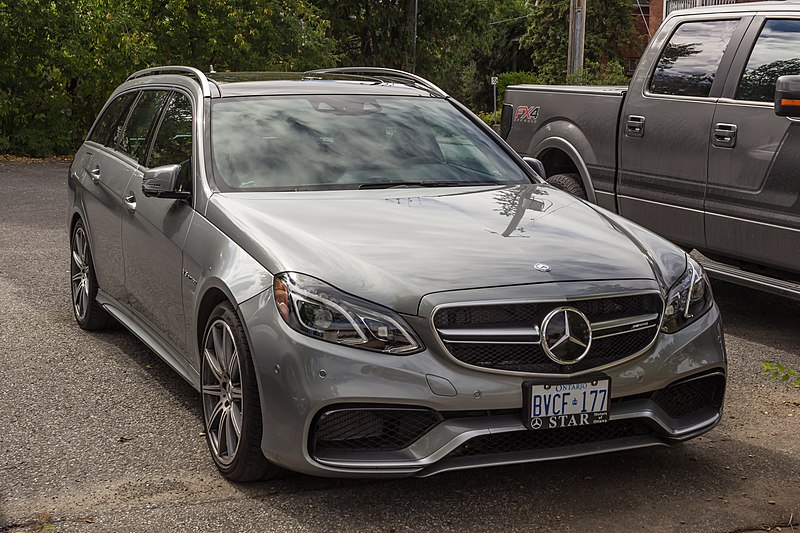A used premium car is a dream for many drivers. Such cars are very comfortable and their appearance hardly ever ages. You must remember, however, that premium cars give dishonest sellers an opportunity for big profit. So be careful when buying a used premium car. Check it thoroughly – start by checking the VIN number, completely for free!
The most popular used premium cars in Europe are primarily brands like Audi, Mercedes, BMW, and Volvo. Next in line are Alfa Romeo, DS (the premium brand of PSA Peugeot-Citroen, now part of Stellantis), Porsche, Jaguar, Land Rover and Lexus.
Premium cars are expensive to buy and are most vulnerable to residual value loss. On average, a premium car is worth 50% of its showroom price after 5 years. It’s easy to figure out that if the owner has paid around 100,000 EUR for a car, they will recover only half of that after 5 years.
Wealthy customers usually replace their cars every 4-5 years, which means the used car market is constantly replenished with relatively new vehicles.
Why are used premium cars so popular?
A 5-year-old premium car is still relatively young and very attractive to many potential buyers. No wonder, as the car may have been under warranty for the first 3 to 5 years. Due to the depreciation of its residual value, such a car can be bought for half the price of a new one.
A 10-year-old premium car is still attractive, it has beautiful, timeless styling and great equipment. Additionally, it can be bought for about 15% of the price of a new car. This makes buying such a car possible for many families.
Buyer expectations vs. reality
In many cases, potential premium car buyers think along the lines of: since a wealthy person owned the car, they surely didn’t skimp on servicing and repairs. Even after the warranty had expired, the car was likely serviced at an authorized service center, using original OEM parts and high-quality fluids.
Since it’s a premium car, it must have been made from premium parts of above-average durability that don’t need frequent replacement.
These are mostly myths.
A premium car’s owner may have treated it in a particularly poor way and this will be reflected in the car’s technical condition. The fact that someone could afford to spend 125,000 EUR on a new car does not mean they didn’t skimp on servicing.
Perhaps the wealthy owner didn’t care about the car at all, because they knew they would buy a new one in 2, 3, or 4 years. All neglect and improper treatment of the car will brutally take revenge on the new owner, attacking them with a series of failures.
Premium cars do not have to be entirely made of premium parts. Besides, as with any car, suspension damage can occur, engine components, dozens of sensors and comfort mechanisms need to be replaced, the brake system needs repairs, they need protection against corrosion, attention to their paint coating and the servicing of many systems.
Why do dishonest car dealers like premium cars?
Because a premium car gives the dealer a chance to make a substantial profit.
Dishonest dealers often buy used cars at auctions organized by insurance companies. In this way, they can become owners of accident-damaged cars (most often), even after a total loss, flood-damaged cars, stolen cars, heavily damaged cars.
Many premium cars can be imported from wealthy countries (e.g. the USA), where owners find it uneconomical to repair the car for various reasons. First, due to the enormous service costs, second, because the owner can afford a new car.
Let’s assume a new premium car had a showroom price of around 125,000 EUR.
After 5 years, the average market price of the car is 60-80 thousand EUR, depending on the version, mileage and owner preferences.
A dishonest dealer buys a crashed car at an insurance company auction for 20,000 EUR. Then they import it to their home country, paying all the additional fees (2,000 EUR, including transport costs).
Locally, the car is sent to a friendly workshop. They source body and mechanical parts from dismantling (worth 10,000 EUR), install them and carry out any other repairs at the lowest possible cost to bring the vehicle to good technical condition. Most importantly, to ensure it looks perfect externally. The workshop might charge about 3,000 EUR for all these tasks.
The total cost is 35,000 EUR.
The dishonest seller can list the car for sale for 55,000 EUR. The car will have the most attractive price on the market (since the average is 60-80 thousand EUR), which itself will be a huge magnet for customers.
The car can outcompete others in several ways:
• After an “odometer rollback,” the 5-year-old premium car will have the lowest mileage among its competitors. In modern cars, a specialist only needs to connect a diagnostic computer to change the digital odometer reading on the dashboard.
• A professional photo session and an enticing description (bought from a wealthy owner, who looked after it as if it were his own wife) will win the hearts of many potential buyers.
• Additional advantages may include falsified service history, a warranty that doesn’t apply anywhere and many more.
Such a car will be sold very quickly by a dishonest seller. During negotiations, they might reduce the price to 53,000 EUR. The satisfied buyer will pay this amount, believing they have made a great deal, buying a lightly used premium car in perfect condition, thousands of EUR cheaper than the other competitors.
The dishonest seller will make a net profit of 18,000 EUR.
And the buyer? Depending on the quality of the repair and the parts used, they will realize after a few or several weeks that their perfect premium car is far from perfect.
Check a premium car using its VIN – for free!
Do you want to buy a used premium car?
First – check if the car has any records in insurance and police databases worldwide.
Go to CrashStatus.com, enter the car’s VIN and get a free response.
The seller doesn’t want to provide the VIN? – don’t buy this car!
Are there any records? The car may have been stolen, involved in an accident, flood-damaged, the owner didn’t participate in a recall (didn’t care about the car) – don’t buy this car!
Check the detailed history of a premium car for a small fee!
Purchase a paid report on CrashStatus.com! For just 14 EUR, you will get access to a lot of interesting information. Including registered mileages.
Check the exact technical condition of a premium car for a fraction of its price!
You didn’t find anything wrong in the purchased report? Great!
Now you need to have the car checked at a workshop or a Vehicle Inspection Station of your choice. This is necessary! Only after conducting a comprehensive technical inspection of the car you can decide whether to buy it.
You can also commission a pre-purchase inspection from automotive experts.

